When you work with Metric, List, and Table data in Pigment, you can sort and organize your data across multiple levels.
Sorting makes it easier to analyze, search and retrieve information, and it streamlines your dataset management. Depending on what type of data you’re sorting in Pigment, you can sort information as follows:
- Ascending or descending order
- Higher to lower numerical value
- Alphabetical or reverse alphabetical order
You sort your data by either:
- Selecting and right-clicking a row or column header
- Using the Sort View panel
We describe how to do both types of sorts for List, Metric, and Table data in more detail below.
Each time you perform a sort, this action adds a new sort rule. To edit or view the sequence of your sort rules, click the Sort icon to open the Sorting View panel. The Sort icon is located next to the Filter icon on your Pigment toolbar:

Sort your Transaction and Dimension List data
To quickly sort your List data, right-click the row header in your List to sort the Metric values in ascending or descending order.
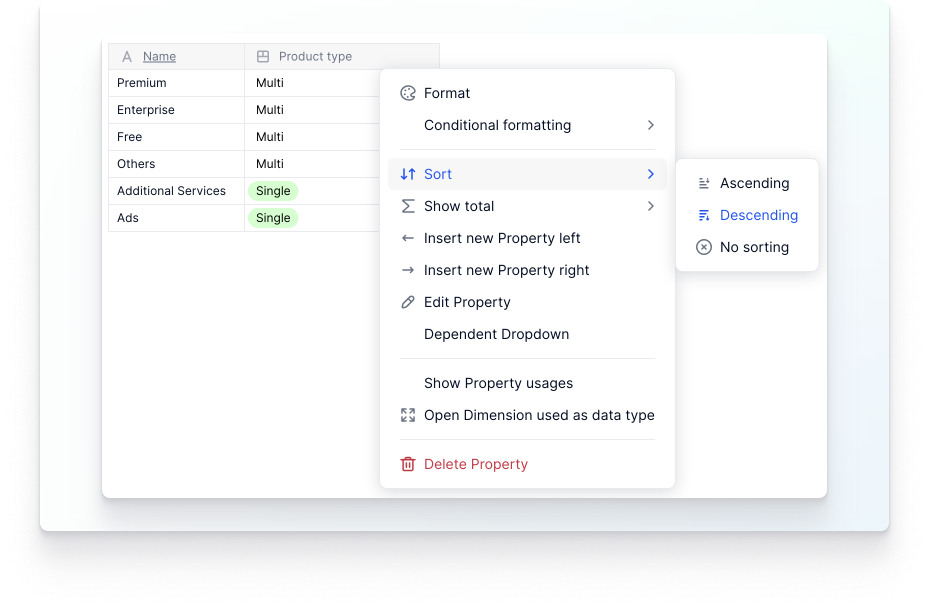
You can also do a multi-level sort on your Transaction and Dimension List data. This is done by selecting additional properties available in your List.
In this example we use a Dimension list:
- Open your Dimension list and click the Sort icon.
- In the Sorting View pane, click + Add a sort.
- Select a Dimension list property from the menu.
- Select how you want to sort your data.
- Repeat steps 2 and 3 for each sort level that you need.
- (Optional) Drag and drop each sort to arrange the sort sequence.
- (Optional) Click the Delete icon to delete a sort.
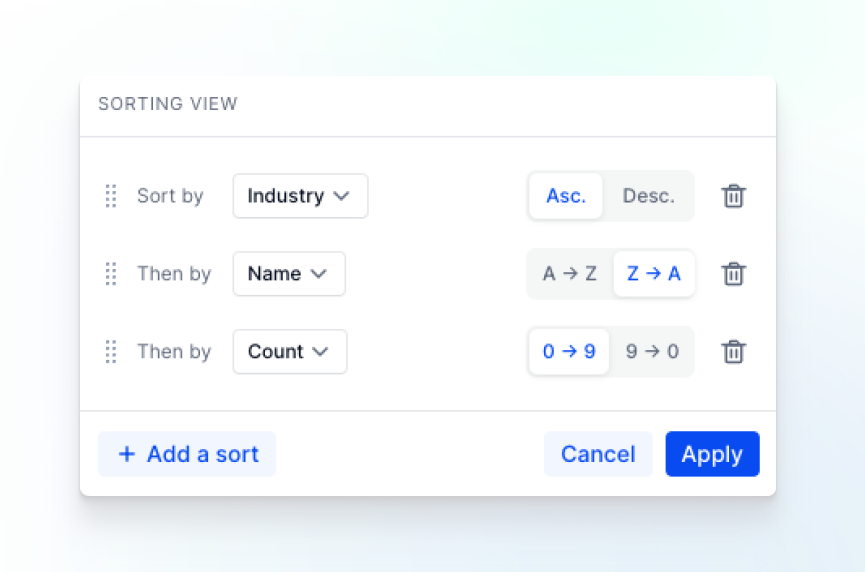
Multi-level sort on a Dimension list
Sort your Metric or Table data
You sort Table and Metric data in Pigment in a similar way. We use Metric data in this example.
To quickly sort your Metric data, right-click the column or row header in your Metric. You can do one of the following:
- Sort the Metric values of the selected row or column in ascending or descending order.
In the example below, the numerical values listed in column FY 24 are sorted in ascending value. As a result, this also reorders each country that is assigned to a row in the Metric.
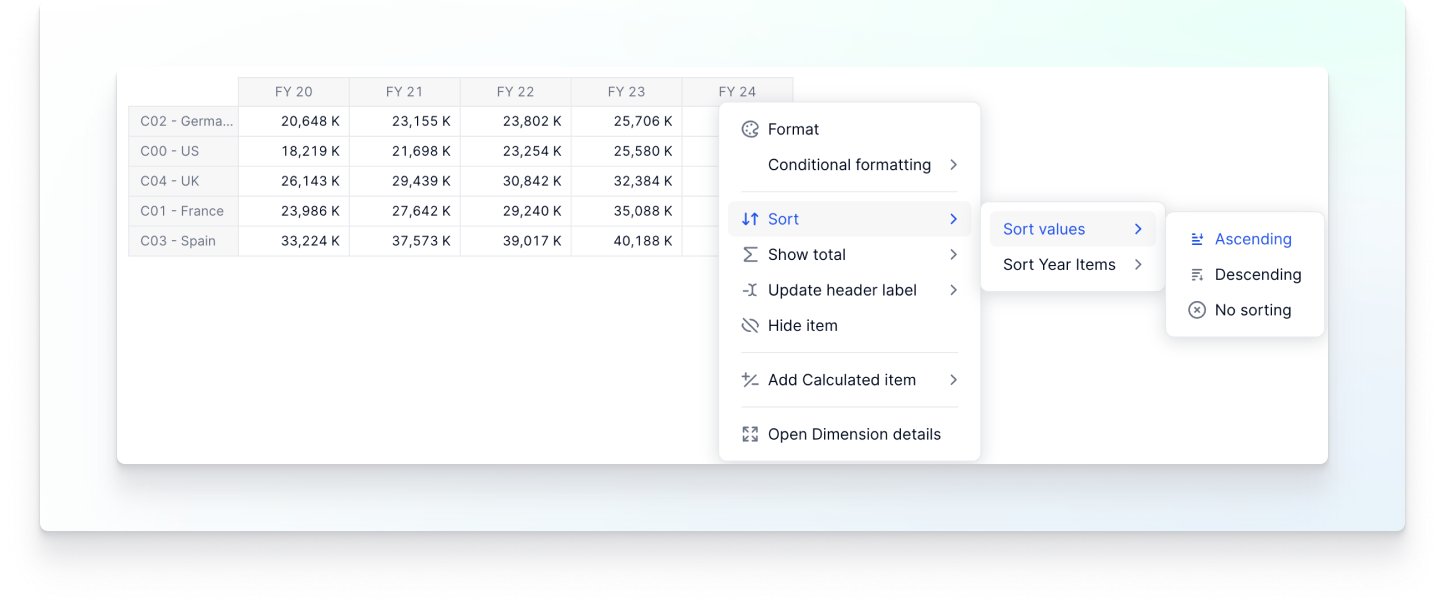
Quick Metric sort by value - Sort the Dimension items of the selected header according to its properties.
In the example below, we sort the Country column according to a property called Language, this is available in the list of Dimension properties, Show Country Items.
The result is that the Country column is sorted in ascending order according to each row’s Dimension property: English, French, German, Spanish.
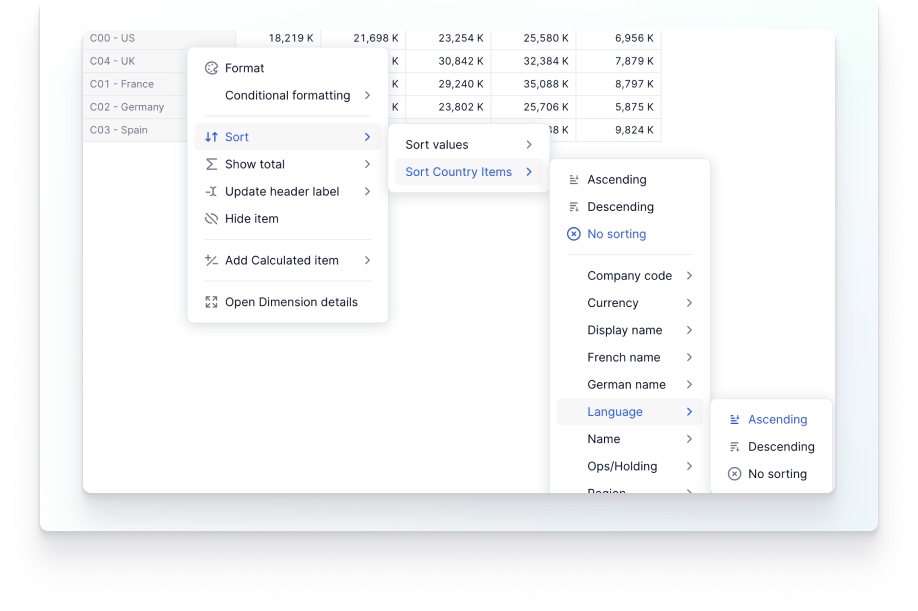
Quick Metric sort by Dimension property
To sort Metric data using the Sorting View panel, do the following:
- Open your Metric and click the Sort icon.
- In the Sorting View pane, click + Add a sort.
- Select either Metric Value or Property.
- If you want to sort by Property, select an item of the opposite Dimension to define the values you want to sort on.
- Select the sort order.
In the example below, the Region Dimension is selected, and sorted alphabetically by the Name property.
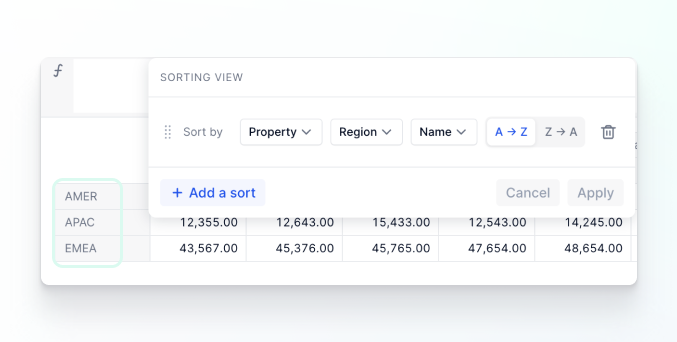
Sort by property - If you want to sort by Metric Value, select the required Dimension to sort.
- Select the sort order.
In this example, the Metric value is selected for Month, and the sort is in ascending numerical value. However, because there are 3 different rows with values for months, you need to specify which row, or opposite Dimension to sort. Here, with EMEA selected as the opposite Dimension, the sort is performed only on EMEA values.
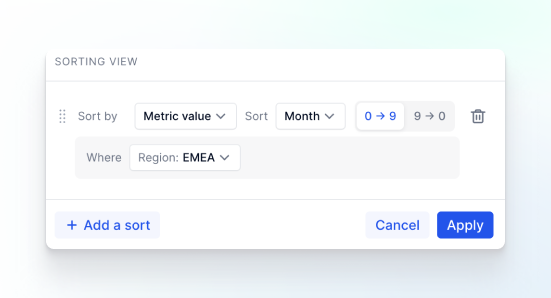
Sort by Metric Value 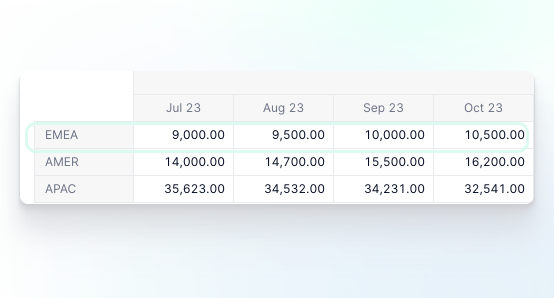
Sort by Metric Value Result - (Optional) Drag and drop each sort to arrange the sort sequence.
- (Optional) Click the Delete icon to delete a sort.
Sort on subtotals
You can sort by Metric value that is projected on the Total of the perpendicular Dimensions in the grid. If no aggregator has been defined for that Metric on the Dimension, then a default aggregator is added. This aggregator is a SUM in the case of a number or integer Metric, and a COUNT for all other metric types.



